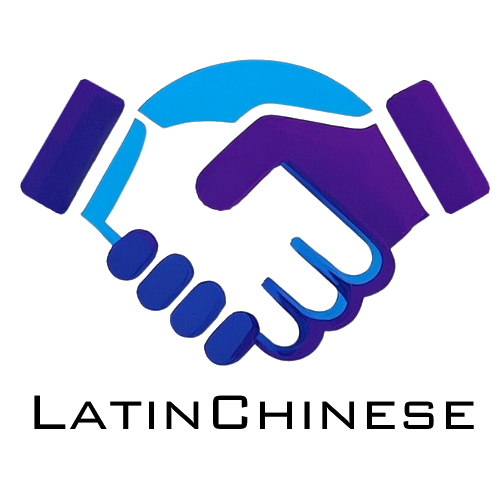1. Background: US tariff policy towards China and its impact
In recent years, the United States has continued to increase tariffs on Chinese goods, involving multiple industries such as machinery and electronics, textiles, and furniture. The tariff rate for some goods is as high as 245%. This has caused Chinese export companies to face the challenges of rising costs and declining competitiveness. In this context,Re-export trade(Triangular Trade) has become one of the important strategies for enterprises to avoid high tariffs.PeruDue to its geographical location, trade agreements and relatively relaxed regulatory environment, it has become one of the popular choices for Chinese companies to re-export to the United States.
2. Why choose Peru as a transit trade hub?
1. Advantages of the Free Trade Agreement (FTA) between Peru and the United States
Peru and the United States signed the US-Peru TPA in 2006, which came into effect on February 1, 2009. Most products can enjoyZero or low tariffsEntering the U.S. market. By exporting goods to Peru first, undergoing simple processing or transit, and then exporting them to the U.S. as "Peruvian origin", the high U.S. tariffs on China can be effectively circumvented.
2. China and Peru have close trade relations and convenient logistics
- China is Peru's largest trading partner, with smooth bilateral trade and mature shipping routes (such as Shanghai/Shenzhen → Port of Callao → Los Angeles/Long Beach, USA).
- Peru's import policy towards China is relatively loose, and its transit operation is flexible, making it suitable forChange cabinet, repackaging, document adjustmentWaiting for re-export operation.
3. Relatively loose rules of origin
Under the US-Peru FTA, as long as the goods are transported in PeruSubstantial changes(If the assembly and processing reach a certain value-added ratio), you can obtain Peruvian origin qualification. Compared with other transit countries (such as Vietnam and Malaysia), Peru's origin certification process is simpler.
3. Operational Model of Peru’s Re-export Trade
1. Basic process
- China exports to Peru:Chinese companies normally export goods to Peru and declare them as "transit trade" and do not pay high tariffs for the time being.
- Peru transit operations:
- Simple processing(such as changing packaging, labeling, and assembling some parts) to meet the rules of origin.
- File Adjustment:Reissue Peruvian Certificate of Origin (CO), commercial invoice, bill of lading, etc. to ensure compliance with US-Peru FTA requirements.
- Peru exports to the United States:Customs clearance as Peruvian origin goods, enjoy low tariff or duty-free treatment.
2. Key compliance points
- Origin certification: It is necessary to comply with the "tariff classification change" or "value-added ratio" requirements of the US-Secretary-General FTA (usually processing value-added of 35% or above is required).
- Logistics and Document Management:
- Ensure that the information on the bill of lading, packing list, and invoice is consistent to prevent US Customs from tracing the Chinese origin.
- Choose a reliable Peruvian agent to assist with customs clearance and documentation compliance.
- Anti-risk aversion:U.S. Customs may investigate "false origin" practices and must ensure that transit operations comply with WTO and FTA rules.
4. Analysis of the pros and cons of Peru’s re-export trade
Advantages
✔ Reduce tariff costs:Tariffs on some commodities can be reduced from 245% to 0%-5%.
✔ Circumventing trade barriers: Reduce direct restrictions caused by Sino-US trade frictions.
✔ Supply chain flexibility: Peruvian ports (such as Callao) can be used as regional logistics hubs to radiate the American market.
Risks and Challenges
✖ Origin Certification Risks: If the processing is insufficient, it may be identified as "laundering origin" by the US Customs and face fines or cargo seizure.
✖ Increased logistics costs: Additional costs such as transit operations, warehousing, agency services, etc. need to be calculated to see if there is still a cost advantage.
✖ Policy change risk:The United States may strengthen its review of Peruvian imports, such as an anti-circumvention investigation into Southeast Asian photovoltaic products in 2024.
V. Suggestions for Enterprises to Response
- Compliance first:Consult a professional trade lawyer or agent to ensure that the transit mode complies with the US-Myanmar FTA and the US Customs (CBP) requirements.
- Cost Estimation: Compare the comprehensive costs of direct export to the United States and re-export to Peru (tariffs + logistics + agency fees), and choose the best option.
- Supply chain backup: You can simultaneously inspect other transit countries (such as Mexico and Vietnam) to diversify risks.
VI. Conclusion
Under the background of high tariffs between China and the United States, entering the US market through Peruvian re-export trade is a viable alternative, especially forMechanical and electrical, textiles, light industrial productsHowever, enterprises need to strictly comply with regulations, avoid anti-circumvention investigations, and pay close attention to changes in US trade policies. In the long run, a diversified supply chain layout (such as building factories overseas) is still a more robust strategy to deal with trade barriers.
